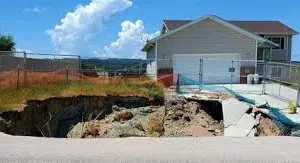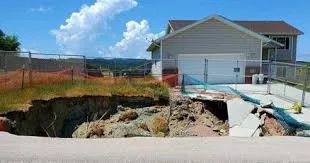
Professional engineers studying the Hideaway Hills subdivision in Black Hawk, S.D., site of a 2020 sinkhole over an abandoned state-operated
gypsum mine, say the remaining homeowners should leave because soils under and around their homes contain gypsum and present a very serious threat to their lives and property.
Those opinions are contained in two reports on geotechnical testing and core sampling commissioned by attorneys at the Fox Rothschild law firm, which
represents the homeowners in a class-action lawsuit against the state of South Dakota set for trial later this year.
The studies, performed by two Wyoming-based engineering firms, reveal three discrete but interconnected problems for the 158 homes at Hideaway Hills, chief
among them the presence of pulverized gypsum in the subsurface soils under homes and roads, not just in the abandoned mine below the surface. Testing shows
the soils utilized by the state for mine reclamation contain an average of about 25 percent pulverized gypsum, with a high of 80 percent. Some residents are living in
areas with 40 feet of fill dirt, a majority of which is pulverized gypsum.
The engineers conclude that stabilizing the homes and streets at Hideaway Hills is not feasible and that the best use of the land is to demolish the homes and mitigate
the mine by turning the area into open space.



